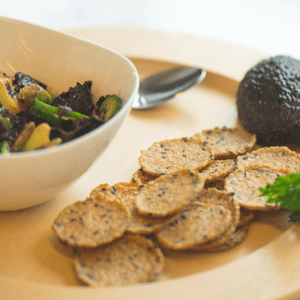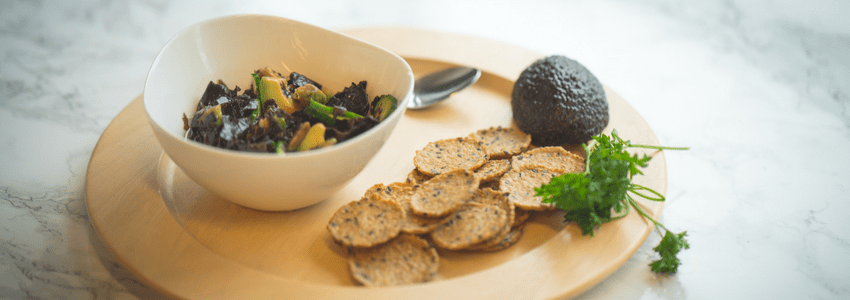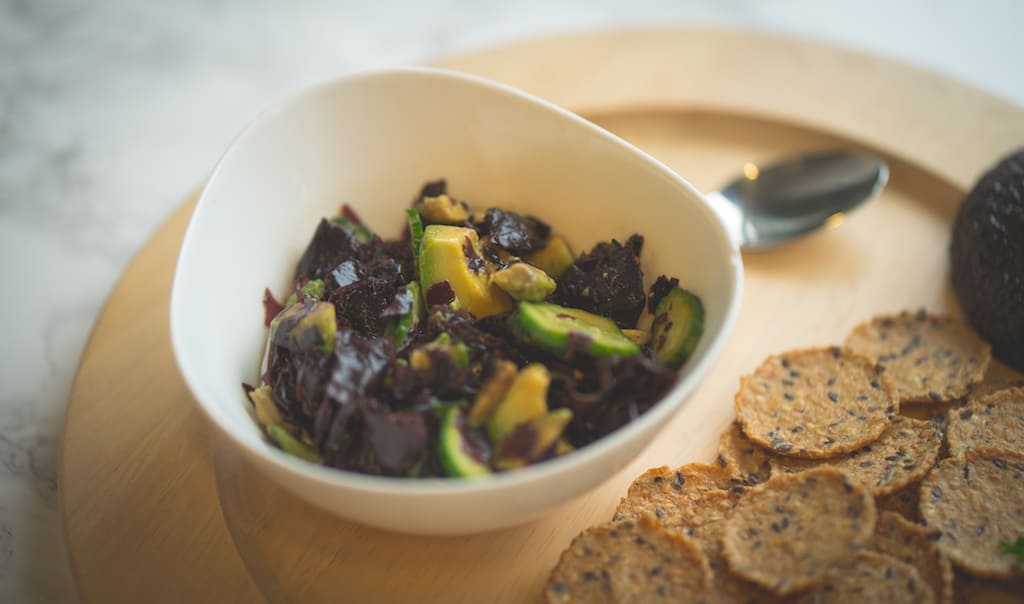We love our greens here at AlgaeCal and one of the top ways to get those greens is from salads. You’ll see a few different salads on any given day here at the office with all the typical ingredients.
However, to switch things up, we decided to swap out the kale and spinach for something different – seaweed!
Some common varieties are wakame, nori, kombu, and dulse. With up to 20 times the bone-building nutrients and trace minerals compared to regular vegetables, seaweed (or sea vegetables) are a fun and nutritious alternative for the more adventurous foodie. Along with calcium and magnesium, they also tend to be high in potassium. Studies have shown potassium is essential to our health, with its long list of benefits showing it improves heart health, reduces the risk of stroke and supports your bones!
Seaweeds are also rich (and tend to vary) in iodine; a mineral studied for preventing hyper & hypothyroidism, thyroid cancer, and goiter. How you prepare seaweeds can affect the iodine content. For instance, boiling kombu in water for 15 minutes can remove up to 99% of its iodine content. (If you have a thyroid condition, please check with your doctor before trying sea vegetables as you may need to limit or avoid iodine-containing foods.)
In this recipe, we use a red seaweed called dulse – which tends to have more protein and fiber than other seaweeds. There are thousands of different species around the world with an array of nutrient contents. Dulse is technically called Palmaria Palmata. You can also try adding finely chopped dulse into soups and noodle dishes to add a touch of flavor, and a ton of nutrients. And if you’re a vegetarian, dulse can even be fried for a convincing bacon alternative!
Check out how to make your own bone-building seaweed salad below!

How-to-Make Seaweed Salad
Ingredients
- 1 small avocado chopped
- 1 mini-cucumber chopped
- 15 g dulse died, rehydrated
- 2 tbsp white or black sesame seeds roasted
- 1 tbsp sesame oil
- 2 tbsp rice vinegar
- 1 tbsp soy sauce or tamari*
Instructions
- Soak the dulse in warm water for 5 minutes; drain well by squeezing and chop fine.
- Transfer to a large bowl serving plate.
- In a small bowl, mix together the liquid ingredients.
- Toss the liquid ingredients with the dulse to combine.
- Sprinkle with the sesame seeds and serve immediately.
Notes
- Magnesium: 73 mg
- Vitamin: B6 10%
- Phosphorous: 28 mg
- Iodine: 1169 µg
Nutrition
Warnings of pollutant toxicity or heavy metal consumption from sea vegetables is a valid concern. If these sea vegetables are soaking up all these beneficial minerals from the ocean it would only make sense that they’d also absorb some of the negative compounds. However, most studies have shown that heavy metal toxicity from sea vegetables is not something to worry about and is extremely rare. The only type of sea vegetable that you should consider completely avoiding is hijiki, which has been consistently shown to possess heavy metals.
The Japanese have one of the world’s longest life expectancies at 83 years old on average, which is 5 years longer than the US. Plus, they boast incredibly low rates of certain types of cancer. One major dietary difference is their intake of seaweeds.
Not only are they excellent sources of iodine, but they also boast significant amounts of bone-building minerals such as calcium, magnesium, and potassium. These veggies from the sea will continue to be a staple in my diet. What about you? What are your favorite ways to eat seaweed? We’d love to hear in the comments below!






Article Comments